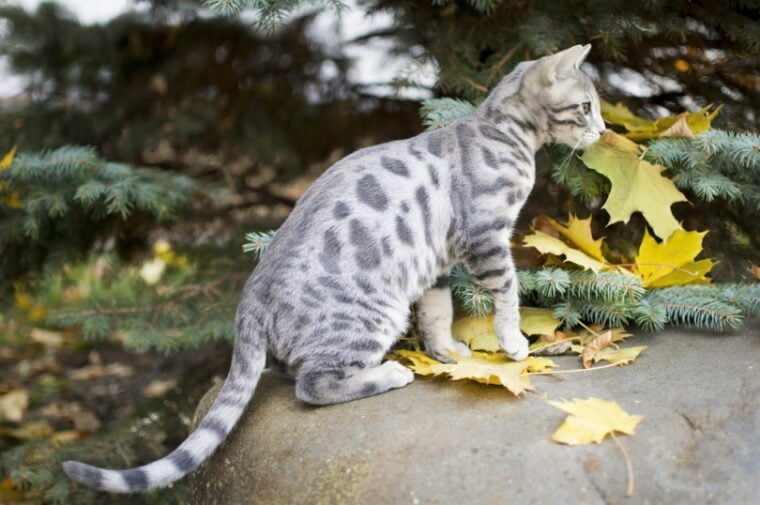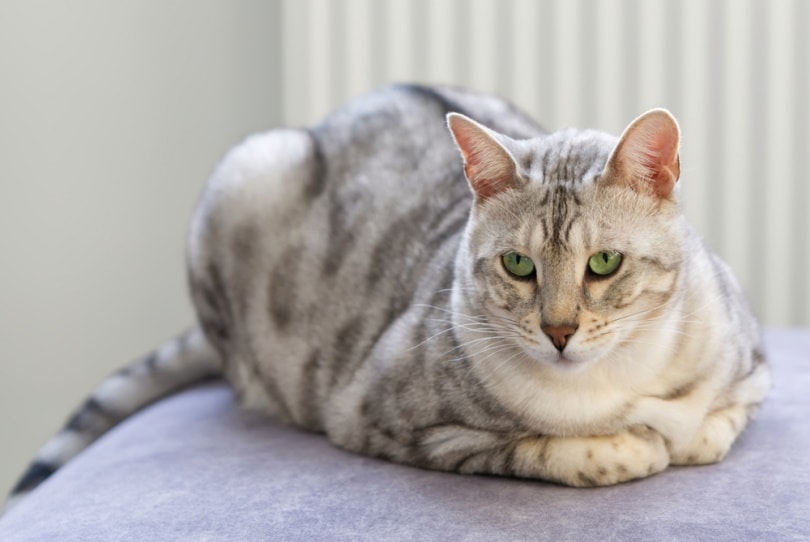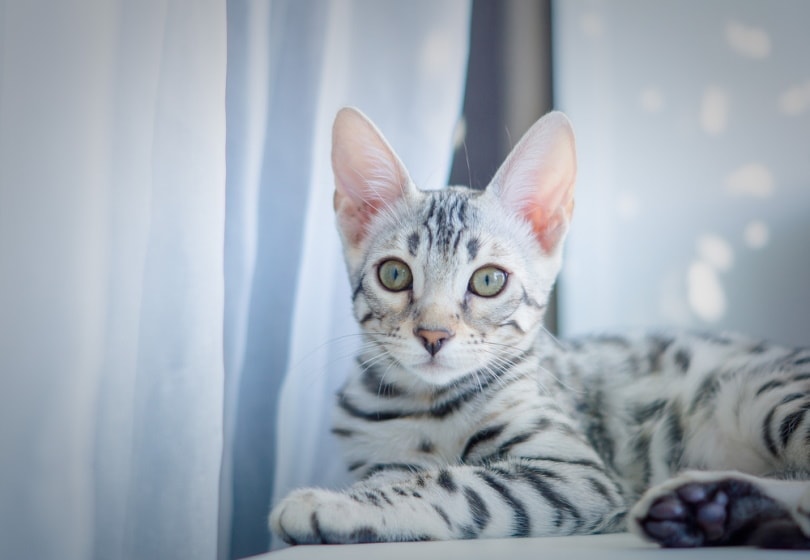
Click to Skip Ahead
Do you love the exotic look of a Bengal cat, but don’t want to take on all the work of caring for a wild animal? Then consider adopting a blue Bengal! These cats are just as beautiful as their wild cousins, but they’re much more manageable to care for.
Breed Overview
Height:
13 – 16 inches
Weight:
8 – 17 lbs
Lifespan:
10 – 16 years
Colors:
Brown spotted, seal lynx point, sepia, silver, mink
Suitable for:
Experienced cat owners
Temperament:
Intelligent, energetic, playful
In this article, we will provide pictures and information about these amazing creatures, as well as the history of the Bengal breed. We hope that after reading this post, you will be inspired to adopt one of these magnificent animals!
Bengal Characteristics
The Earliest Recorded Blue Bengal Cats in History
The earliest recorded blue Bengal cat is believed to have been born in 1986. This cat, named Seal Mitted, was the result of a cross between a Bengal and a Siamese. She had blue fur with darker spots, and white paws and chest. Her breeder, Jean S. Mill, decided to name her after the Seal point Siamese, which is also a blue-eyed cat.

How Blue Bengals Gained Popularity
While Seal Mitted was the first recorded blue Bengal, she was not the only one of her kind. In fact, there were several other blue Bengals born around the same time. These cats all shared the same striking blue fur and dark spots, but they also had different patterns and colors on their paws and chests.
Formal Recognition of Blue Bengal
The first blue Bengal to be registered with the International Cat Association (TICA) was born in 1987. She was named smokey, and she had a beautiful blue-gray coat with black spots. Smokey’s breeder, Jane Martinke, decided to register her with TICA in order to raise awareness about the new breed of blue Bengal cats. Since then, the popularity of blue Bengals has grown exponentially. These days, you can find them all over the world!
Top 5 Unique Facts About Blue Bengal Cats
Now that you know a little bit about the history of blue Bengals, it’s time to learn some facts about these unique creatures! Here are five things you may not have known about blue Bengals:
1. Blue Bengals are actually a fairly new breed of cat. The first recorded blue Bengal was born in 1986.
2. Blue Bengals are a cross between a Bengal and a Siamese. The first recorded blue Bengal was named Seal Mitted after the Seal point Siamese.
3. Blue Bengals can have either blue or green eyes. Smokey, the first blue Bengal to be registered with the International Cat Association, had green eyes.
4. Blue Bengals are known for their beautiful blue fur and dark spots. However, they can also come in a variety of other colors, including brown, silver, and black.
5. Blue Bengals are considered to be one of the most exotic breeds of cats. They are also one of the most expensive, with some blue Bengals costing as much as $5,000!

Do Blue Bengals Make Good Pets?
Now that you know a little bit about blue Bengals, you might be wondering if one of these beautiful creatures would make a good pet for you. The answer is yes! Blue Bengals are actually very affectionate and loving cats. They love to play and will often follow their owners around the house. They are also very intelligent and can be trained to do tricks. However, blue Bengals do require a lot of attention and care. They should not be left alone for long periods of time, and they need to be brushed regularly to prevent their fur from matting. If you are considering adopting a blue Bengal, make sure you are prepared to give them the time and attention they need.
Blue Bengal FAQs
Are blue Bengals intelligent?
Yes, blue Bengals are actually very intelligent cats. They can be trained to do tricks and love to play.
Do blue Bengals require a lot of care?
Yes, blue Bengals require a lot of attention and care. They should not be left alone for long periods of time, and they need to be brushed regularly to prevent their fur from matting.
Are they prone to illness?
No, blue Bengals are not prone to illness. In fact, they are actually one of the healthiest breeds of cats.
Do they get along with other pets?
Yes, blue Bengals generally get along well with other pets. However, they may be a bit too playful for some animals.

Can they be left alone?
No, blue Bengals should not be left alone for long periods of time. They need a lot of attention and care.
How much do blue Bengals cost?
Blue Bengals are one of the most expensive breeds of cats, with some costing as much as $5000!
Are blue Bengals good climbers?
Yes, blue Bengals are excellent climbers. They love to explore and will often climb to high places in your home.
What diet do they need?
Blue Bengals need a diet that is high in protein and low in carbohydrates. They should also have access to fresh water at all times.
What is the average lifespan of a blue Bengal?
The average lifespan of a blue Bengal is 15 years. However, some have been known to live for 20 years or more.
Do blue Bengals shed?
Yes, blue Bengals do shed. However, they shed less than other breeds of cats. You can minimize shedding by brushing them regularly.
Are they hypoallergenic?
No, blue Bengals are not hypoallergenic. However, they are less likely to trigger allergies than other breeds of cats. If you are allergic to cats, it is best to consult with your doctor before adopting a blue Bengal.
Do they like water?
Yes, blue Bengals love water. They often enjoy playing in sprinklers or taking a dip in a kiddie pool.
Conclusion
If you’re considering adding a blue Bengal to your family, be sure to do your research! These beautiful cats make great pets, but they require a lot of care and attention. Now that you know a little bit more about them, you can decide if a blue Bengal is the right pet for you.
See also:
Featured Image Credit: Kutikova Ekaterina, Shutterstock








